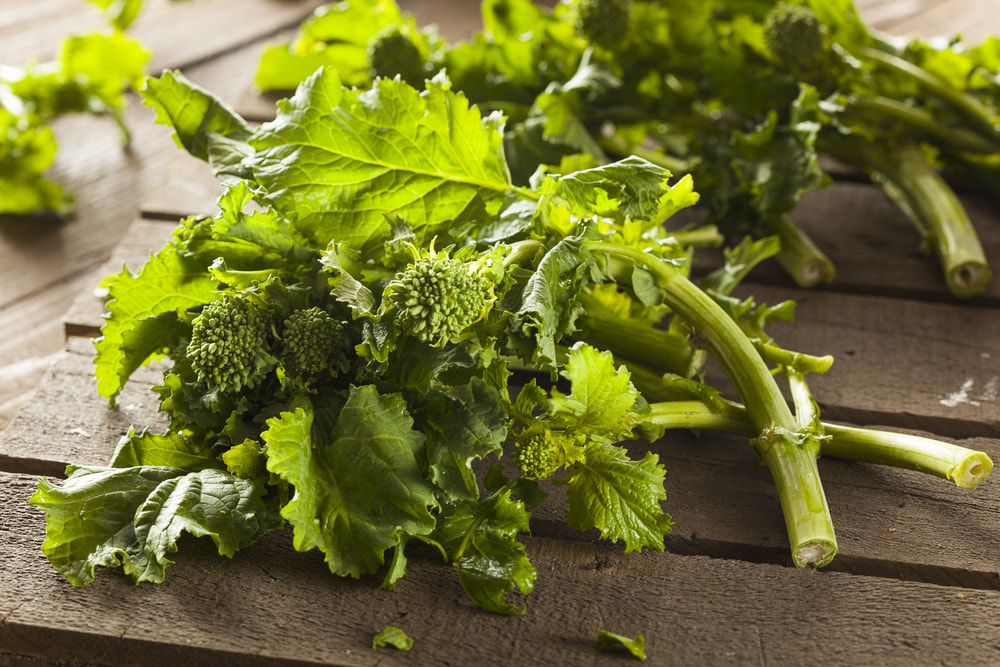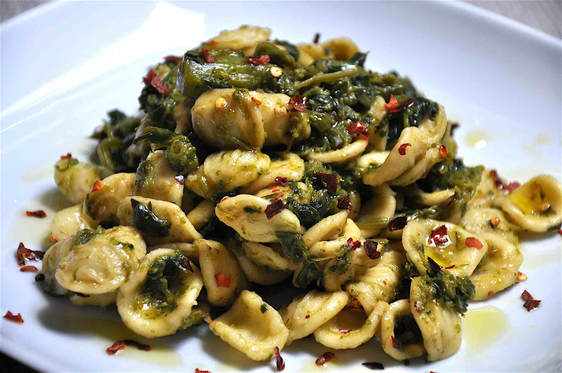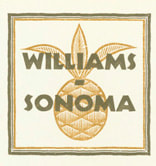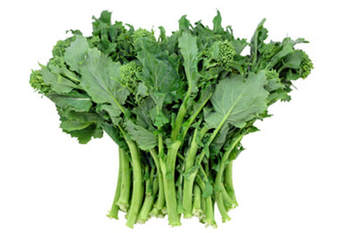
Broccoli rabe (räp’ - eh) is actually a member of the turnip family (rabe in Italian means turnip). The stalks, leaves, florets or yellow flowers are all edible. The leaves and stalks are usually cooked to soften their toughness and the flavor can be described as nutty, bitter, peppery or spicy and reminiscent of mustard greens. Broccoli Rabe can also be called broccoli raab, broccoli rape, or rapini, although, botanically speaking, rapini is a different plant entirely.
Rapini and broccoli rabe are close cousins and their names are often used interchangeably. They are in the same subspecies as the turnip, hence they have the characteristically slightly bitter taste of this group. Neither Rapini or broccoli rabe form the large floret heads that are seen in broccoli. “Rape” is the Italian name for turnip. Broccoli Rabe is not broccolini. Broccolini is a hybrid created in 1993--a cross between broccoli and Chinese broccoli. It has small florets, long stalks, and a few small leaves, where Broccoli rabe has large leaves. Broccolini stalks look like asparagus. 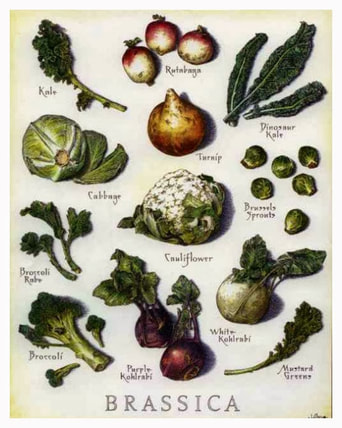
History
Native to the eastern Mediterranean and Asia and one of the earliest cultivated crops, broccoli rabe (Brassica rapa) was first eaten for its roots and leaves. It can also be allowed to flower and go to seed, with seeds collected and crushed for their high oil content (40 percent), commonly known as rapeseed oil, or in today's cooking as canola oil. The oil, in its simplest form can be used as lamp oil and a lubricant, in the same way olive oil has been used throughout history. Brassica rapa may have been used as oil in Italy as early as the 13th century and was the major lamp oil in Europe by the 16th century. Botanically speaking, Brassica campestris, Brassica rapa and Brassica napus are identical. In Italy, there can be different names for it: in Naples it is known as friarielli; in Rome broccoletti; in Puglia, cime di rapa (literally meaning "turnip tops"). It is also known as i broccoli friarelli and sometimes broccoli di rape, rapi, or rapini (little turnips).
How to Use Broccoli Rabe
How to use broccoli rabe in Italy depends on the region... in northern Italy, they will throw away the florets and use only the leaves, while in southern Italy, they will throw away the leaves and each only the florets. It is a cool season crop, so you will find it locally--and fresh--during late fall, through the winter and into early spring. In U.S. supermarkets, you can usually find it year-round, grown in other countries and flown in. Broccoli rabe contains tons of nutrients: 3-1/2 ounces provides half your daily requirement of vitamins A and C. It’s also a good source of folate, potassium, fiber, and calcium. It's also high in antioxidants, protecting you from cancer, inflammation and coronary disease. Make sure you are buying fresh broccoli rabe. Look at the base of the stalks for a cream color (not dark). They should be crisp, not floppy. The leaves should not be floppy or dried out and the buds should be bright green. If they are yellowed, pass them by. It's natural bitterness is lessened with cooking and pairs well with strong flavors like pork sausages or starchy things, like pasta, rice and potatoes. If you like it milder, just cook a bit longer, or after blanching in very salty water (the way you cook pasta), remove from the water, drain and then saute in olive oil. (In Puglia, they tend to omit the blanching in water). As for the stalks, if they are large, peel them first before cooking, they same way you would peel asparagus. If you are using the florets, throw them into the pan after stems or leaves... they are tender and cook fast. If you are growing your own and your plants have started to bolt and produce yellow flowers, it's not a total waste (see below about plants "bolting"), just snip the edible flowers to toss into soups or salads or to top off your plating.
How to Grow Broccoli Rabe from Heirloom Seeds
The only difficulty is that the seeds are very tiny. You can sow them directly in the garden, but then thin the seedlings as soon as possible to 4 - 6 inches apart. You can use the seedlings right away by washing and tossing into your salads and soups. When to grow broccoli rabe is up for debate. While it is considered a cool weather crop, like turnips, lettuces or radishes, many old Italians will tell you that they grow it all year long--even when the weather turns hot. You can plant seeds right after the last frost, but need to grow smaller and faster growing varieties... and remember to cut and harvest just as the florets are forming... not after. Interestingly, varieties might have numerical names that correspond to their growing cycle, such as Quarantina (40 days), Sessantina (60 days) or Novantina (90 days), but regardless of the name, you need to pay attention to the plants and harvest immediately as soon as you see the florets forming... and all varieties tend to form flowers earlier than the seed packets claim. Wait too long--a day or two--and your plants will bolt (stop growing leaves and put their energy into producing seed). If this happens, this bitter plant will instantly turn into that proverbial bitter pill. Stalks will store in your refrigerator for about 10 days, so it's best to stagger the planting of your seed into batches a week or more apart to ensure a fresh supply during the growing season. One warning about growing broccoli rabe from seed... they tend to cross pollinate with other braccias like broccoli, turnips and even it's distant cousin, mustard. Don't plant braccias too close to each other.
If you want an authentic way to make the famous dish from Puglia, Cime di Rapa, check out this video with Gennaro Contaldo, from the Two Greedy Italians cooking show from BBC... Favoloso!
|
Archives
May 2024
Categories
All
|

